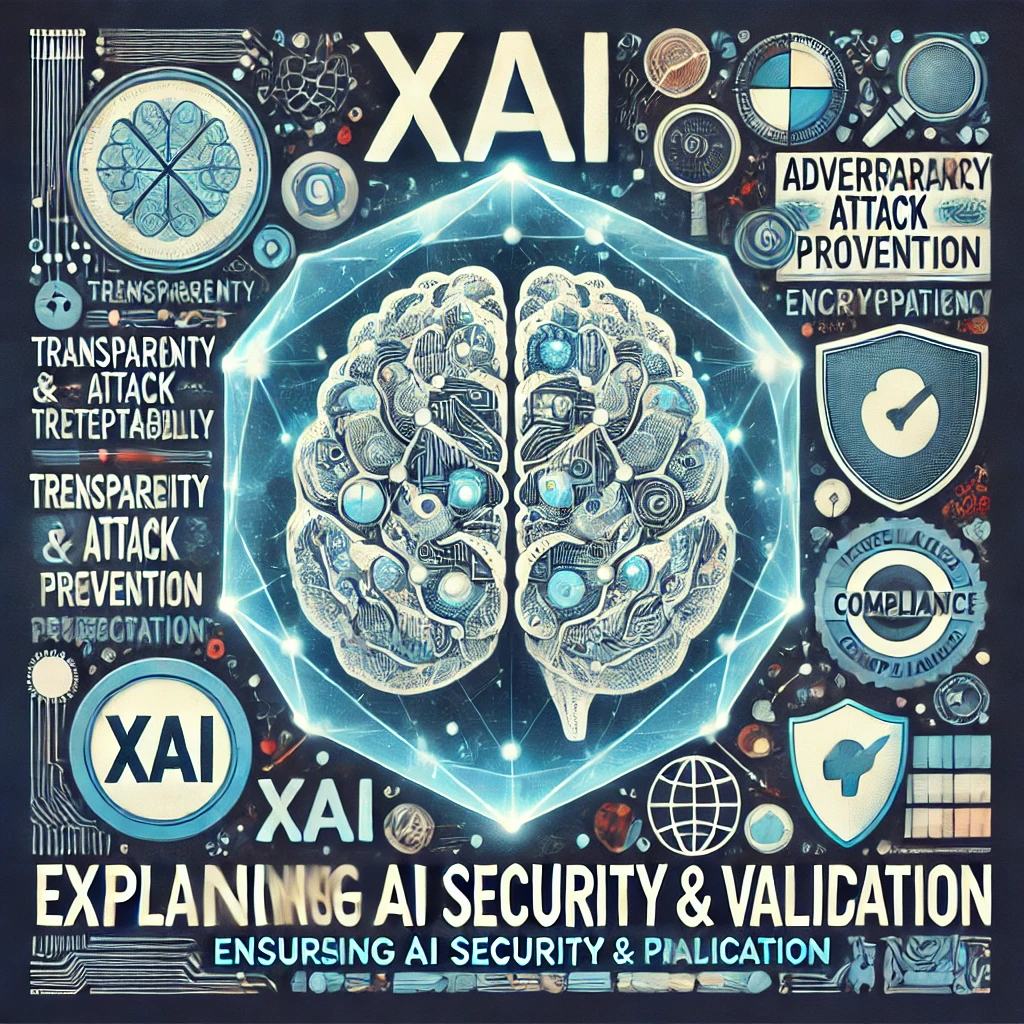As AI systems become more prevalent in enterprise applications, ensuring their security and reliability is crucial. Explainable AI (XAI) techniques play a vital role in maintaining AI validation and security by providing transparency, interpretability, and accountability. Organizations implementing XAI can detect anomalies, mitigate biases, and enhance trust in AI-driven decisions.
This article explores the major role of XAI in AI validations and security, outlining key challenges, benefits, and best practices for leveraging explainability in AI governance.
1. Enhancing AI Transparency and Interpretability
One of the primary goals of XAI is to make AI decision-making processes transparent and interpretable.
1.1 Understanding Model Decisions
- XAI techniques enable users to comprehend why an AI model made a particular decision.
- Methods such as SHAP (SHapley Additive Explanations) and LIME (Local Interpretable Model-Agnostic Explanations) help break down complex model outputs into human-readable insights.
- Interpretability ensures that AI decisions align with business goals and ethical considerations.
1.2 Reducing Model Complexity
- Complex deep learning models often function as black boxes, making it difficult to trace decision pathways.
- XAI simplifies AI logic by offering feature attribution and visualization techniques.
- Model simplification improves trust and regulatory compliance.
2. Strengthening AI Security
XAI plays a crucial role in identifying and mitigating AI security threats.
2.1 Detecting Adversarial Attacks
- AI models are susceptible to adversarial attacks that manipulate inputs to deceive outputs.
- XAI can flag anomalies by analyzing decision inconsistencies.
- Security teams can use explainability tools to detect and prevent adversarial threats in real time.
2.2 Preventing Data Poisoning
- AI models rely on training data, and adversaries can poison datasets to introduce biases or vulnerabilities.
- XAI ensures that data integrity is maintained by exposing outliers and inconsistencies.
- Organizations can use explainability to validate training data and detect malicious tampering.
2.3 Enhancing Model Robustness
- By providing transparency into AI workflows, XAI helps developers refine models for security hardening.
- Regular validation using XAI tools ensures that AI systems remain resilient against cyber threats.
3. Ensuring Regulatory Compliance and Ethical AI
With AI regulations becoming stricter, XAI helps organizations stay compliant with legal and ethical standards.
3.1 Supporting GDPR and CCPA Compliance
- Regulatory frameworks like GDPR and CCPA mandate AI transparency.
- XAI allows organizations to explain AI decisions to users and auditors.
- Explainability enhances AI accountability and minimizes legal risks.
3.2 Mitigating Algorithmic Bias
- AI models can inherit biases from training data, leading to unfair outcomes.
- XAI techniques help identify and correct biases by revealing how different factors impact decisions.
- Continuous monitoring with XAI ensures fairness and reduces discrimination risks.
4. Improving AI Validation and Model Auditing
AI validation ensures that models perform as expected under different conditions. XAI provides a systematic approach to validating AI models before deployment.
4.1 Debugging Model Performance
- XAI enables teams to pinpoint sources of errors and inconsistencies in AI outputs.
- Debugging tools based on XAI frameworks facilitate real-time model optimization.
4.2 Continuous Model Auditing
- Organizations can use XAI for ongoing monitoring of AI systems.
- Model drift detection using explainability techniques helps maintain accuracy over time.
5. Best Practices for Implementing XAI in AI Security
Organizations can integrate XAI into their AI security strategy using these best practices:
5.1 Use Model-Agnostic Explainability Methods
- Employ SHAP, LIME, and Counterfactual Explanations to enhance interpretability across different models.
- Avoid reliance on a single explainability technique for robust AI transparency.
5.2 Establish Explainability in AI Governance Policies
- Define clear policies that require AI models to provide interpretable outputs.
- Maintain documentation of AI decisions to support audits and compliance checks.
5.3 Integrate Explainability into Model Development
- Embed XAI tools into AI pipelines for early validation.
- Ensure that AI security assessments include explainability tests.
5.4 Train AI Teams on Explainability Techniques
- Educate data scientists, security teams, and stakeholders on the benefits of XAI.
- Promote the use of interpretable AI models in critical decision-making.
Conclusion
Explainable AI (XAI) is instrumental in ensuring AI security, validation, and compliance. By providing transparency, mitigating biases, and detecting adversarial threats, XAI enhances the trustworthiness of AI-driven systems. Organizations that prioritize explainability in their AI governance can reduce risks, strengthen model integrity, and meet regulatory requirements effectively.
Integrating XAI into AI security frameworks is essential for fostering responsible AI adoption and safeguarding against evolving cyber threats. By following best practices, businesses can ensure that their AI systems remain secure, fair, and accountable.
